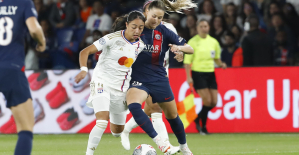If the story of Manuel has made you think and you also want to help this cause to change the world
ACTS
as a child, Manuel Aguilera used to hide in the bowels of a dead cow to see how the vultures devoured the carrion. That unconditional love towards the necrophagous cost a typhus and a couple of fevers that almost killed.
more, keep watching daily to the vultures, cares for them, feeds them and even speaking with them from the pedregal de Santa Cilia de Ponzano, Huesca, where the bearded vulture waiting also your turn to crush bones with the help of gravity. A show that receives thousands of visits each year and serves as an excuse to call attention to a bird put away and another in danger of extinction.
When Manuel peeked his curiosity of those viscera, we only had a couple of break –as he calls them– in the mountains outside of the aragonese Pyrenees. Watch it, it was a challenge to the reach of very few. Today, up to 10 families of Gypaetus barbatus caught the thermals that climb the sierra de Guara to find the leftovers of the leftovers that leave your brothers and sisters, the vultures are ugly, before you go to los Monegros. It is not a coincidence. Manuel has given his life to the care and recovery of all of these crowns with the help of your Fund Friends of the Vulture.
Manuel Aguilera is a character peculiar and endearing that you love at first sight as he loves his vultures, a bag of wisdom, self-taught based on experience. ”Manu, the vultures', an original type up to birth. Came into the world on the 31st of December, 1952, at 12 of the night in his house of Binaced (Huesca). Since he was little, I played hide from the vultures and the regañinas of his parents by coming home smelling of guts. So while voice quivering with emotion, to remember their first big admirer, his mother, who died when he was only 13 years old.
The vulture is not a vermin
" Says Manu on the food of filming that, historically, the myths and legends have been disguised as a demon which is just a scavenger. His reputation has always been on the floor. “And there are silly animals. Are vultures and ready”, does not cease to repeat.
The vulture is to the queue in the list of animals iberian that represent the brand faunal diversity of our country; list headed surely for the lynx and the bull. However, according to SEO/BirdLife, 90% of all vultures in europe is found in our Iberian peninsula, with some species even in danger of extinction, such as the bearded vulture. The vulture is a noble animal and ready, an ally of the livestock that cleans up the fields, breaking down everything he swallows, and that protects the aquifers from contamination and infections. “If you give him the hand, he gives you his respect and affection”, more emotionally Manu. Just for that, we should begin to think about changing our priorities.
But in the lost peoples of the Pyrenees continue to circulate stories of break stealing piglets and lambs, of vultures poking around in the wounds of cattle and shepherds. Death, ignorance and fear have always clouded his image. “When I was in the Park of Ukhahlamba-Drakensberg, in south Africa, one of the villagers told me that he had seen a vulture carrying a baby. With security was a lie. Birds are very slow and skittish, and rarely hunt. But the myths and legends also cross borders”.
And that is one of the great legacies of Manu. The disclosure here and in Africa. No one from Barbastro, Jaca look as bad to the vultures, and fewer farmers. There are an institution, a way of life, a large economic impact for the region, which competes with the canyoning and the tourism adventure of the Sierra de Guara. With a difference. The ornithological tourism is a more respectful, more considerate of the environment. While some will scale, to play, the others just come to watch, to learn. “At the beginning came a few people. Now with social networks all over the world as we know it. In 2016, came almost 5,000 people. Last year, 4.000. 50 euros per person that leaves the tourist in the area, this is wealth or not?” we account Manu with pride.
The excuse is the vulture
Manuel puts on his old raincoat red blood so that the birds recognize him from the heights, slipped the gloves of the welder and push you proud of your electric cart to overflowing with entrails and hoofs recycled from the butcher nearby. With her on the path of the pedregal and there he receives his friends in a kind of ritual that is repeated day after day for decades. Sometimes with the public; the more, in strict solitude.
The reception is spectacular. More than 50 animals come and surround him. “Today they are very few, must be in the Monegros”, he says worried. You recognize, eat out of his hand (and just your hand) and begin to snort and to run into spikes and claws against the stones looking for food in a kind of dance ceremonial which impresses. Manuel speaks to them by name, he invites them to eat and laugh when I bitter a gall, or when they are disturbed by a movement of our camera: “I Squat! No one should stand above them, they would cower and go away,” he warns. He can do what he wants, he has earned it after 30 years coming.
The sound technician recorded the flutter of a number of copies at the back for the flight: “it Is amazing the noise they make,” he says. And it has an evolutionary explanation. Vultures are not hunters, they can afford to make noise, its feathers are more noisy and compact, and are designed to push more air, not as the owl, that it cannot hear, nor to one meter of distance. Things you learn with Manu.
half-site you discover that the griffon vulture is an excuse. Manuel does with us as with the tourists. Let us impress by the show, by the force of nature. It is all a function, a wake-up call to put the focus on conservation and respect for the natural environment. Manu is here today for another thing:
Manuel, distributing food to the vultures in the 80's.—it's coming! It seems a breeding –shouts Jessica Beard, looking at the sky. Jessi is a companion to today of site and responsible for the Museum of Vulture Santa Cilia de Ponzano.
—No, it is an adult –replica convinced Manu.
An immense bearded vulture of more than three meters wingspan makes a couple of passes looking and waiting for their turn to eat. If there are vultures, not low. If you see people not low. We are very lucky to be able to contemplate it so close. “Today I brought 100 pounds of carrion, 80 were bones and 20 meat. For the griffon vultures this is an appetizer. Don't need it”, reveals to us Manu. And you are right: a griffon can eat youta a kilo of meat in just 60 seconds; the breaks have to grind the bone for him to eat. Yes, you can eat the bone and not just the core. Another thing learned today.
The conservation work of the Fund Friends of Vulture today focuses more on the bearded vulture, the griffon vulture, and their feeders are the claim, a wealth of protected natural respect and care but is not in danger. Although it has not always been the case. With the mad cow disease, the dumps disappeared by law in 2005 and the population of vultures has declined by 50% in the Spanish territory. Fortunately, in 2009, the European Union ratified and authorized los'Points of Supplementary Feeding as the five which today maintains the Fund Friends of the Vulture, the great work of Manu and his / her travel companions: “I spend a lot of money in the conservation of vultures. I don't want anything to change. I just want to see them. And to keep seeing.”
Manuel Aguilera is a media persona created intelligently in order to focus attention and resources, a type that sold picturesque, but which in fact has a speech much more profound: “The human beings we treat living beings as machines [...] This is a balloon closed, everything here do affect us as much to them as to us.”
in The end, your project of life are not so much of the carrion as the commitment and the conviviality with all the natural environment, constant learning, and the disclosure in the respect for other living beings to try that the vultures not to end up being us.
do you Want to know the full story?
Watch
Listen
Content adapted from the video of Manuel
00:00
Manuel Aguilera has lived fascinated by the vultures from the age of nine. With the mad cow disease, the population dropped 50%. Manuel decided to create the association Fund Friends of the Vulture in the province of Huesca, and increased the growth of the population of vultures in Spain. Currently develops projects in Spain. The Gambia and south Africa.
MORE INFORMATION
The woman that upholds the dignity of the menstrual revolution of the role of use, and to plant00:26
I Was nine or ten years old when my grandfather took me to throw a dead animal to the dump. Since I saw those birds so large and I was... and I said “Whew!, this is bigger than I imagined”.
00:42
And at the age of 12 I decided to go for it, I did not believe that they were vermin.
00:49
I became the weirdo of the village, I was not going to play football with all the guys, my world was the dunghill, to know what beings live with this energy that you had died.
01:03
There are a few species that we have marked with a cross. I with the vultures I decided one day to bring to light and take away that bad image. Them we have always kept the fields clean to avoid diseases, but, however, in the TWENTY-first century, with all the technology in the world, we have been commanded to stop.
01:23
The vultures are very sociable, they are very smart, because if not, with all the perrerías we've done to them, would have become extinct.
01:36
When I first met my friend David Gomez decided to create the Fund Friends of the Vulture, a form of get together the people we love the vultures, which we liked, and to work for them selflessly, and I don't want anything to change, I just want to see them, or to keep watching.
01:55
it Is my soul, my spirit, do you not?
02:00
Makes about 12 or 14 years did the House of the Vultures because it was beginning to be a demand for tourism. We have five feeders, as for taking one to the tourism nothing would happen. At the same time give life to the area; that which before looked like a critter produces wealth.
02:21
We have managed to teach that the vultures were not so bad as painted and that they would not be persecuted and killed.
02:34
This is a ball closed, a balloon closed, everything here do affect us as much to them as to us, we need to take care of the planet, it's the only home we know.
02:46
And my mother said to me: "Is that you, Manu, came the stork, he brought a vulture to a nest and missed this one, didn't know where to leave this vulture. Then I changed the skin, I put on a skin of a human, and left you at home, there comes this".
03:06
My passion and my world and my life are the birds and this planet, my home.
This content has been developed by Yoigo.

 After 13 years of mission and seven successive leaders, the UN at an impasse in Libya
After 13 years of mission and seven successive leaders, the UN at an impasse in Libya Germany: search of AfD headquarters in Lower Saxony, amid accusations of embezzlement
Germany: search of AfD headquarters in Lower Saxony, amid accusations of embezzlement Faced with Iran, Israel plays appeasement and continues its shadow war
Faced with Iran, Israel plays appeasement and continues its shadow war Iran-Israel conflict: what we know about the events of the night after the explosions in Isfahan
Iran-Israel conflict: what we know about the events of the night after the explosions in Isfahan Sánchez condemns Iran's attack on Israel and calls for "containment" to avoid an escalation
Sánchez condemns Iran's attack on Israel and calls for "containment" to avoid an escalation China's GDP grows 5.3% in the first quarter, more than expected
China's GDP grows 5.3% in the first quarter, more than expected Alert on the return of whooping cough, a dangerous respiratory infection for babies
Alert on the return of whooping cough, a dangerous respiratory infection for babies Can relaxation, sophrology and meditation help with insomnia?
Can relaxation, sophrology and meditation help with insomnia? Vacation departures and returns: with the first crossovers, heavy traffic is expected this weekend
Vacation departures and returns: with the first crossovers, heavy traffic is expected this weekend “Têtu”, “Ideat”, “The Good Life”… The magazines of the I/O Media group resold to several buyers
“Têtu”, “Ideat”, “The Good Life”… The magazines of the I/O Media group resold to several buyers The A13 motorway closed in both directions for an “indefinite period” between Paris and Normandy
The A13 motorway closed in both directions for an “indefinite period” between Paris and Normandy The commitment to reduce taxes of 2 billion euros for households “will be kept”, assures Gabriel Attal
The commitment to reduce taxes of 2 billion euros for households “will be kept”, assures Gabriel Attal The exclusive Vespa that pays tribute to 140 years of Piaggio
The exclusive Vespa that pays tribute to 140 years of Piaggio Kingdom of the great maxi scooters: few and Kymco wants the crown of the Yamaha TMax
Kingdom of the great maxi scooters: few and Kymco wants the crown of the Yamaha TMax A complaint filed against Kanye West, accused of hitting an individual who had just attacked his wife
A complaint filed against Kanye West, accused of hitting an individual who had just attacked his wife In Béarn, a call for donations to renovate the house of Henri IV's mother
In Béarn, a call for donations to renovate the house of Henri IV's mother Skoda Kodiaq 2024: a 'beast' plug-in hybrid SUV
Skoda Kodiaq 2024: a 'beast' plug-in hybrid SUV Tesla launches a new Model Y with 600 km of autonomy at a "more accessible price"
Tesla launches a new Model Y with 600 km of autonomy at a "more accessible price" The 10 best-selling cars in March 2024 in Spain: sales fall due to Easter
The 10 best-selling cars in March 2024 in Spain: sales fall due to Easter A private jet company buys more than 100 flying cars
A private jet company buys more than 100 flying cars This is how housing prices have changed in Spain in the last decade
This is how housing prices have changed in Spain in the last decade The home mortgage firm drops 10% in January and interest soars to 3.46%
The home mortgage firm drops 10% in January and interest soars to 3.46% The jewel of the Rocío de Nagüeles urbanization: a dream villa in Marbella
The jewel of the Rocío de Nagüeles urbanization: a dream villa in Marbella Rental prices grow by 7.3% in February: where does it go up and where does it go down?
Rental prices grow by 7.3% in February: where does it go up and where does it go down? With the promise of a “real burst of authority”, Gabriel Attal provokes the ire of the opposition
With the promise of a “real burst of authority”, Gabriel Attal provokes the ire of the opposition Europeans: the schedule of debates to follow between now and June 9
Europeans: the schedule of debates to follow between now and June 9 Europeans: “In France, there is a left and there is a right,” assures Bellamy
Europeans: “In France, there is a left and there is a right,” assures Bellamy During the night of the economy, the right points out the budgetary flaws of the macronie
During the night of the economy, the right points out the budgetary flaws of the macronie These French cities that will boycott the World Cup in Qatar
These French cities that will boycott the World Cup in Qatar Women's C1: at what time and on which channel to watch the OL-PSG semi-final first leg
Women's C1: at what time and on which channel to watch the OL-PSG semi-final first leg Tennis: after two victories this Friday, Grégoire Barrère qualifies for the semi-finals of the Bucharest tournament
Tennis: after two victories this Friday, Grégoire Barrère qualifies for the semi-finals of the Bucharest tournament Cycling: Mathieu Van der Poel “recharged the batteries” for Liège-Bastogne-Liège
Cycling: Mathieu Van der Poel “recharged the batteries” for Liège-Bastogne-Liège Mercato: Zidane at Bayern? We'll talk about it again, but...
Mercato: Zidane at Bayern? We'll talk about it again, but...


















